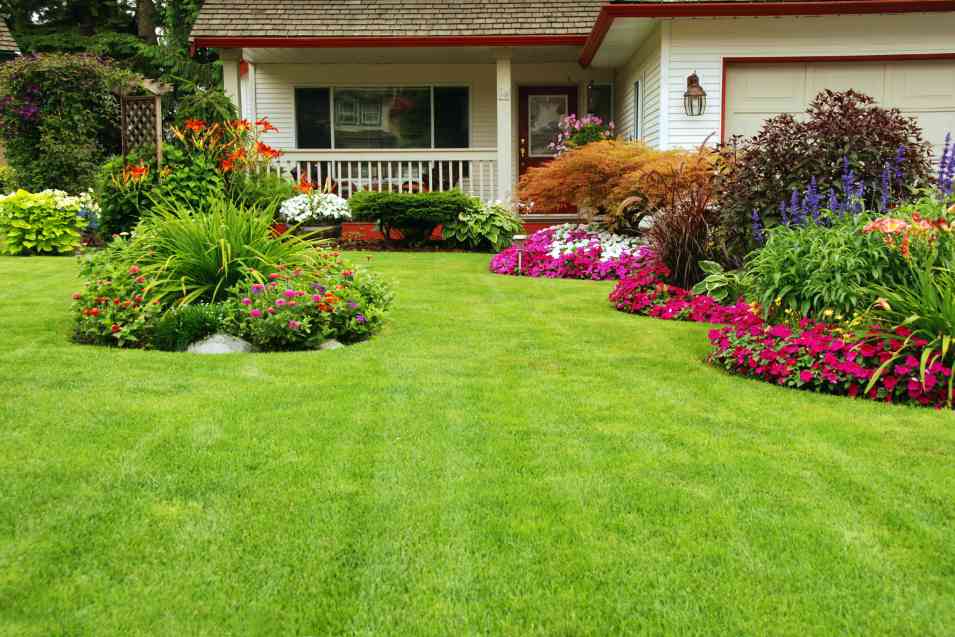Creating a low maintenance landscape for your lawn requires a lot of planning and research. Fortunately, there are many ways to make your landscaping easier and more attractive. You can use artificial grass, plants that require less water, and even groundcovers.
Groundcovers
Ground covers come in a wide variety of varieties, each providing a specific benefit to your landscape. From texture to color, to reducing heat, to controlling weeds, groundcovers can add a lot to your yard.
If you’re looking to create a low-maintenance lawn, it’s important to choose the right plants for your landscape. For example, moss is a low-maintenance ground cover that can thrive in nearly all types of soil. It doesn’t require mowing, but will need watering when the ground gets dry.
Another option is hens-and-chicks, a succulent that grows well in rock gardens. This plant also makes a great edging for stone walkways.
Creeping phlox is another option. This groundcover provides beautiful spring flowers. It’s easy to care for, as it forms dense mats of narrow green leaves.
The silver carpet is another low-maintenance ground cover. It’s a soft, spongy groundcover that’s ideal for areas that get partial shade. Once it’s established, it’s drought-resistant.
Periwinkle is a fast-growing ground cover that blooms in the spring and summer. It can also be used to control erosion on slopes.
Ornamental grasses
Ornamental grasses are a great way to add a bit of movement and texture to your yard. They are low maintenance and have very few pest and disease problems.
Ornamental grasses are available in a wide variety of colors, sizes, and varieties. Choose a variety based on your landscape and climate. You can also pick a variety that is drought resistant. These grasses will make excellent garden borders and footpath accents.
For an instant beauty, choose a grass with yellow margins. The feathery shoots of this grass will create an instant landscape. This ornamental grass grows well in full sun.
Japanese Silver Grass or Maiden Grass grows in zones four through nine. It forms an upright mound that is covered with bright silver plumes in the fall.
Feather grass is deer resistant and grows well in many growing zones. It is a great addition to poor soil landscapes.
Japanese blood grass is highly invasive in warmer climates, and has been illegal in some states. However, it is a very beautiful and versatile addition to a garden.
Artificial grass
If you’re looking for an easy way to maintain a landscape, you should consider using artificial grass. It is an eco-friendly, low-maintenance option that can be used on playgrounds, patios, terraces, sports fields, and around small trees.
Artificial grass is available in different colors and styles, and comes with a variety of features. A few of the benefits include a non-absorbent fiber that drains fluids into the ground, and anti-odor infill that neutralizes pet odors.

To keep your lawn in top shape, you’ll want to follow a few simple steps. These will protect your artificial grass and help you get the most out of it.
The most important thing to remember is that while artificial grass is low maintenance, it does need regular cleaning. This includes weekly brushing and vacuuming. However, it is also important to note that you may need to rinse the grass more often, especially in high-traffic areas.
One of the more impressive features of artificial grass is its ability to look like real grass. The multi-colored blades create a natural look, and the urethane backing helps keep the grass blades in place.
Xeriscaping
Xeriscaping is a landscaping practice that involves growing plants that are naturally drought tolerant. Compared to other types of landscaping, xeriscaping requires less water, maintenance, and cost. It is a great way to reduce your environmental impact.
Xeriscaping can be achieved by choosing a variety of plants and hardscape materials. For example, you can add a French drain system to your yard to allow rainwater runoff to flow naturally. Another choice would be to install an artificial turf.
Choosing native vegetation for your landscape helps create a habitat for local pollinators, wildlife, and insects. These plants use less water than typical landscaping and are native to your region.
Choosing a low-maintenance landscape requires some time, effort, and patience. You may need to do some pruning, trimming, and soil amendments. However, the end result can be beautiful and environmentally friendly.
If you’re interested in a xeriscaping plan for your home, check with your local housing association, local environmental authority, or other authorities to see if it’s allowed. Also, look for rebates and cash-back incentives.
Related Article: Gradenia Landscaping Ideas
